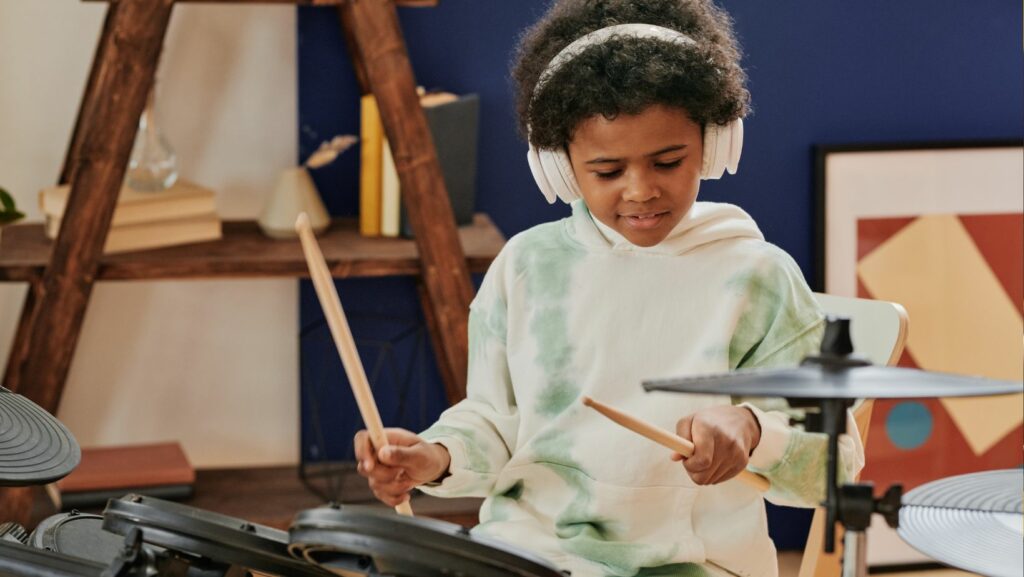Discovering the world of drum beats can be an exhilarating journey for kids, opening doors to creativity and rhythm. Drumming isn’t just about making noise; it’s a powerful way for children to express themselves and develop essential skills. With the right guidance, young drummers can tap into their innate musicality and build a strong foundation in music.
Parents and educators often seek engaging activities that foster both fun and learning, and drumming fits the bill perfectly. By introducing kids to simple drum beats, they not only enjoy the thrill of making music but also enhance their concentration, coordination, and listening abilities. Drumming can be a gateway to a lifelong passion or simply a joyful pastime.
Drum Beats for Kids

Introducing drum beats to children lays the groundwork for essential rhythmic skills. Starting with simple patterns helps kids understand timing and tempo, key components of music. These basic beats focus on maintaining a steady pulse, allowing young drummers to practice consistency and control.
Utilizing age-appropriate resources, such as beginner drum books and online tutorials, enhances the learning experience. These materials break down beats into manageable sections, ensuring clarity. Exercises involving clapping or tapping rhythms also help children internalize beats before moving to drums. Structured lessons with skilled instructors create a supportive environment for progression, allowing lessons to be tailored to each child’s pace and skill level. Group classes offered through music schools promote teamwork and enhance listening skills through interactive learning.
Practicing drum beats significantly improves motor skills, as playing drums requires coordinated hand movements. Repetitive practice fosters muscle memory, enabling kids to achieve fluid rhythms over time. Exposure to various musical styles, from rock to jazz, broadens their understanding of different rhythms and patterns.
Parental involvement is crucial in a child’s drumming journey. Encouraging practice and celebrating milestones boosts enthusiasm. Inviting kids to perform at family gatherings helps build confidence and motivation to learn new beats.
Benefits of Learning Drum Beats
Drumming enhances coordination, a vital skill for young children. It develops both hand-eye coordination and limb independence, enabling them to perform simultaneous movements. For instance, playing different rhythms with hands and feet builds this ability.
Playing drum beats also boosts cognitive development by engaging the brain in complex tasks, strengthening skills like memorization and pattern recognition. Kids involved in these activities often show improved concentration and problem-solving abilities.
Drumming serves as an emotional outlet, allowing children to express feelings creatively and reduce stress. It also fosters social interaction through group lessons or band participation, teaching kids to listen, collaborate, and communicate effectively with peers, nurturing friendships and interpersonal skills.
Popular Drum Beats for Kids
Introducing children to popular drum beats simplifies learning by focusing on rhythm and enjoyment. Beginner-friendly patterns provide a solid foundation:

- Single Stroke Roll: Alternating strokes with each hand build fundamental skills.
- Double Stroke Roll: Tapping each drum twice enhances evenness and control.
- Paradiddle: This challenging pattern introduces variation and coordination.
- Basic Rock Beat: Familiarizes kids with essential beats in popular music.
- Quarter Note Beat: Helps children grasp tempo and timing.
- Eighth Note Rhythm: Bridges simple and complex rhythms, enhancing listening skills.
These patterns engage young learners, fostering progression through enjoyable practice. Parents and educators can introduce these beats during lessons or spontaneous sessions, balancing learning and fun.
Choosing the Right Drum Kit
Selecting an appropriate drum kit is crucial for young drummers. A well-chosen kit enhances the learning experience. Size matters; compact kits suit younger players better. Several manufacturers offer junior drum sets designed specifically for children.
Material quality impacts sound and durability. High-quality kits produce better sound, motivating practice. Brands like Ludwig and Pearl offer reliable beginner options.
Electronic drum kits provide a quieter alternative, ideal for sound-sensitive environments, allowing practice with headphones and offering built-in features like metronomes.
Teaching Techniques for Kids

Effective teaching techniques are vital for introducing drumming to young learners. Structured lessons using age-appropriate language and relatable examples keep kids engaged. Visual aids, like colorful charts, enhance interaction.
Demonstrating techniques rather than abstract explanations aids understanding. Short sessions of 15-20 minutes maintain concentration, with breaks to ensure enjoyment.
Incorporating games and challenges makes learning fun. Allowing improvisation nurtures creativity, while positive reinforcement motivates improvement.
Group lessons enhance learning through peer interaction. Balancing individual attention with group dynamics helps educators cater to each child’s pace.
Utilizing technology, such as apps and online videos, engages young drummers effectively. Careful selection ensures these resources complement direct instruction.
Parental involvement is crucial. Encouraging regular practice and showing interest in progress fosters a supportive learning environment, critical for long-term development.

